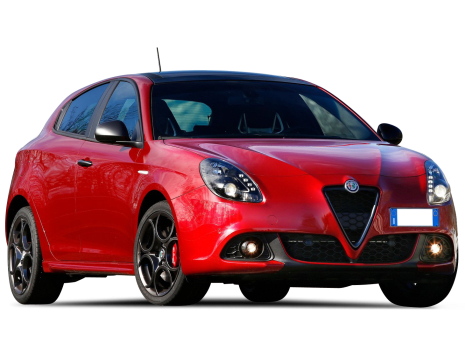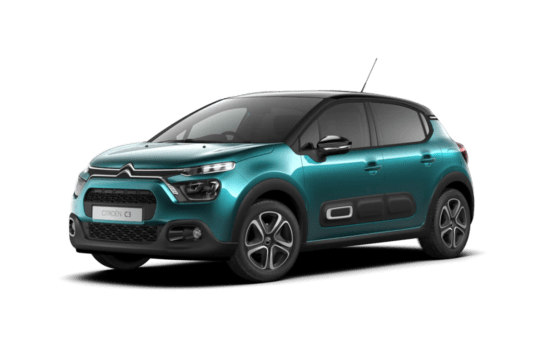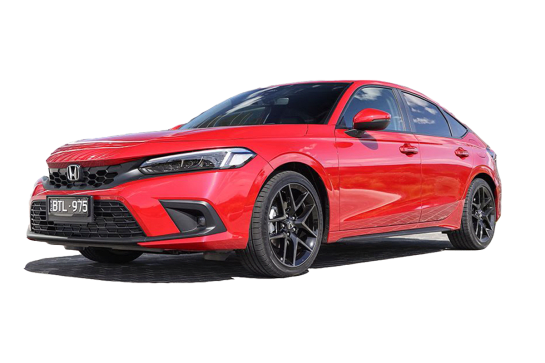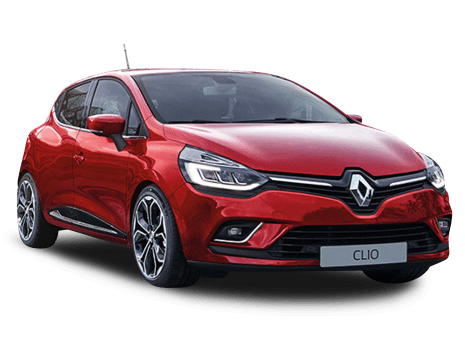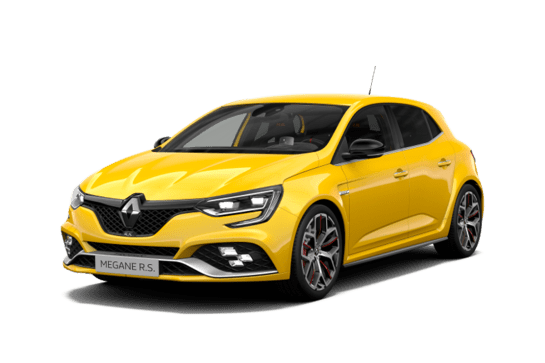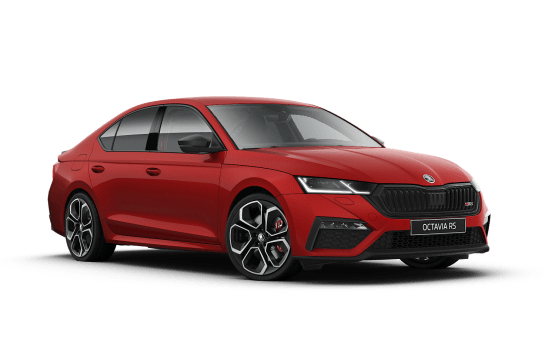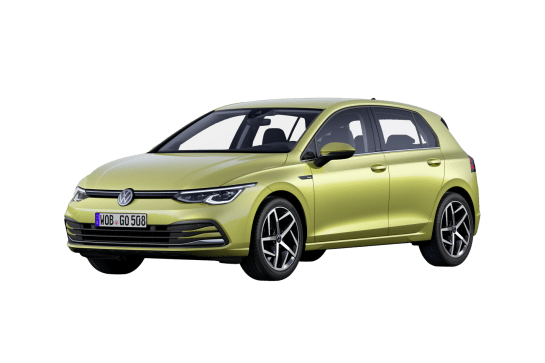
Kia Cerato VS Audi A3
Kia Cerato
Likes
- Peppy turbocharged engine
- Modern simple multimedia system
- Massive boot
Dislikes
- Harsh ride quality
- Unrefined, noisy cabin
- Ageing interior design
Audi A3
Likes
- Quality look, quality feel
- Overall balance and driver involvement
- Proves there’s life in sedans and hatches
Dislikes
- Mild-hybrid interesting, but not a game-changer
- Active cruise extra cost in premium version. Should be standard
- Sportback looks don’t flatter the car
Summary
Kia Cerato
Three years after the fourth-generation Cerato small car rolled into Australian dealerships, Kia launched a mid-life facelift for the sedan and hatch range in mid-2021.
It ushered in styling tweaks including new headlights and Kia’s new logo, as well as more safety tech and a multimedia upgrade.
At the top of the range sits the warmed-up Cerato GT. It’s not quite Hyundai i30 N-level performance, more i30 N-Line. In other words, more than enough performance to keep most people satisfied and enough poke to get away quickly at the lights.
But is the updated version of Kia’s Cerato trying to be something it’s not, or is it a performance bargain?
Read on to find out.
| Safety rating | |
|---|---|
| Engine Type | 1.6L turbo |
| Fuel Type | Regular Unleaded Petrol |
| Fuel Efficiency | 6.9L/100km |
| Seating | 5 seats |
Audi A3
If it was the original BMW 3-Series that invented the compact luxury car market segment all those years ago, then it’s probably fair to claim it was Audi’s A3 franchise that gave rise to the luxury small-hatch category.
On that basis, any new Audi A3 is news but, in the face of the SUV onslaught (including its own stablemate the Q3) the new small Audi has its work cut out for it.
With this update, there’s refreshed styling, a new interior layout and, for the launch of the new cars, two body styles, a conventionally styled sedan and what Audi calls the Sportback; fundamentally a five-door hatchback but with the German brand’s own flair plastered all over it.
Read more on Audi
- 2022 Audi A3 price and features: Australian pricing of new-gen Mercedes-Benz A-Class and BMW 1 Series rival creeps up
- Audi Q2 to be axed! BMW X2, Mini Countryman SUV rival to be discontinued as Audi heads further upmarket
- Audi Australia draws level with Mercedes-Benz, Lexus, Volvo, Jaguar Land Rover and Genesis with new five-year warranty for A1, A3, A4, A5, A6, A7, A8, Q2, Q3, Q5, Q7, Q8 and e-tron
As well as new connectivity and safety tech, the big news is the availability of a mild-hybrid driveline as well as a second powertrain option with more performance from a more conventional layout.
Interestingly, it’s that (mild) hybrid version of the A3 that represents the entry-level variant of the A3. A sign of the times? Perhaps.
As well as the two powertrains, there are two distinct chassis layouts, starting with a front-drive set-up and extending to the option of Audi’s Quattro all-wheel drive (AWD) system.
| Safety rating | |
|---|---|
| Engine Type | 1.5L turbo |
| Fuel Type | Premium Unleaded Petrol |
| Fuel Efficiency | 4.9L/100km |
| Seating | 5 seats |
Verdict
Kia Cerato7/10
Kia has value and packaging on its side with the sleek and spunky Cerato GT sedan. There’s no shortage of standard gear, it comes with the latest multimedia and safety gear and the cabin and cargo area are spacious and practical.
The powertrain is a winner too. Which is why it’s such a shame that it’s let down so badly by the ride quality.
If you’re going to be driving on various road surfaces, or regularly driving long distance, check out the far more compliant Hyundai i30 N-Line instead.
But if you’ll only ever drive in urban areas – or enjoy the occasional back-road blast – and you can handle the firm ride, there’s still plenty to like about the Cerato GT.
Audi A37/10
Producing a car that takes the end result beyond appliance status is no given in a world car-park dominated by SUVs. But Audi has, over the last few decades, shown it is very good at doing just that and the latest incarnation of its A3 stalwart backs that up.
While it might take a bit of mental gymnastics to understand why the base model gets the hybrid driveline, or why the more expensive variant costs more to option with adaptive cruise-control, the fact remains these are driver’s cars from a company that understands that concept.
Yes, the A3 is a relatively expensive way to arrive at a compact hatch or sedan, but if you value the journey as much as the destination, it will all make sense.
While the technical aspects of the 35 TFSI are interesting, the extra power and all-weather grip of the AWD 40 TFSI seem to be worth the additional dollars to us. The A3 has always been a sporty alternative, meaning the sportiest version is the one for us.
CarsGuide attended this event as a guest of the manufacturer, with meals provided.
Design
Kia Cerato
When the fourth-gen Cerato sedan was revealed in US-market Kia Forte guise at the 2018 Detroit motor show, the design was praised for taking inspiration from the sleek Stinger performance sedan.
The facelift has arrived at just the right time to keep the Cerato fresh against the dominant Toyota Corolla, Mazda3 and new Volkswagen Golf.
The sharpened front-end styling features an eye-catching daytime running light signature and the headlights now connect with the redesigned, slimline Kia ‘tiger-nose’ grille in gloss black.
It’s a subtle, yet successful design refresh.
Inside, the Cerato is starting to look its age against rivals like the Golf and Mazda3. Those GT themed additions definitely lift the ambience of the cabin, but the dash layout feels a bit generic and the overall interior design is nothing flash. Especially when you consider the interior of some of Kia’s latest models, like the impressive Sportage medium SUV.
Audi A36/10
It’s actually refreshing in 2022 to see a carmaker putting such an effort into something that isn’t an SUV.
That Audi has bothered with two distinct bodies and two equally distinct drivelines is also one for the books, really.
Technically, the mild-hybrid driveline as seen in larger Audis in recent years is probably the highlight of the new A3, and even though it doesn’t compare with a conventional petrol-electric hybrid, it demonstrates Audi’s attention to detail.
The same goes for the digital instruments which allows the driver to tailor the information displayed at any given time. Need a city map more than you need a tachometer at a particular point in you journey? That’s where this technology comes into its own.
Practicality
Kia Cerato
As mentioned, the red stitching throughout, chunky steering wheel and sports seats are welcome additions to the GT cabin.
There are soft-touch materials on the top of the dash but hard plastics on the dash fascia.
There’s no fully digital instrument cluster, but it has a 4.2-inch LCD display in the cluster showing fuel economy and the like. No complaints with the analogue dials and there’s a digital speedo if required.
The update ushered in Kia’s latest multimedia system to the Cerato and it’s a winner thanks to cool graphics, logical menus and its ease of use.
There’s quite a sizable central storage bin and glovebox, while the console houses a key slot, two sizeable cupholders and a second spot for devices adjacent to the charging pad.
The front sports seats look sexy, have excellent side and body bolstering and they’re firm, but comfortable.
A 600mL bottle will just fit into the doors, bit it’s tight.
Sitting behind my six-foot (182cm) frame in the rear, legroom is adequate but toe room is tight. My head was about an inch away from the headliner due to the sloping roofline. The rear seats are also firm.
The Cerato has lower rear air vents, one USB-C port, a map pocket on the passenger side, a central rear armrest with two cupholders, and bottles slot into the doors easier than they do up front.
Kia offers a temporary spare wheel housed under the boot floor. The boot is long, offering an impressive 502 litres (VDA) of cargo space, which is more than other small sedans like the Subaru Impreza (460L VDA) and the Hyundai i30 (474L VDA).
Lower the rear 60/40 seats via the levers in the boot and that space increases further, but they don’t fold completely flat.
Audi A36/10
Although it’s a compact car externally, clever packaging means there’s ample space inside. Even a tall-ish rear-seat passenger can sit behind a tall-ish driver, and the sculpted rear seat-backs help make that possible.
The only complaint would be that the dark headlining material makes the interior a bit of a cave at times.
Paying more for the 40 TFSI gets you extra cargo nets on the front seat backrests and luggage area, 12-volt sockets in the rear seat and boot. Both versions get floor mats and a centre arm-rest front and rear.
The rear seat in either is split 40/20/40 for a range of possibilities, with the Sportback offering 325 litres (VDA) for the Sportback quattro models, and 380L (VDA) for the 2WD models and its boot capacity is increased to 1145L (VDA) with the rear seat folded flat. The luggage space in the sedan is 390L (VDA) for the quattro AWD version, and a more capacious 425L (VDA) for the FWD model.
Price and features
Kia Cerato
The GT is priced at $35,290 before on-road costs regardless of whether you opt for the four-door sedan (as tested here) or the five-door hatchback, though be aware that Kia Australia regularly runs drive-away pricing campaigns.
There’s not a lot of competition in the warmed-up small car market these days. A number of carmakers have slimmed down their small-car line-ups in the face of falling sales.
Kia’s closest rival is also its mechanical sibling, the Hyundai i30 N-Line sedan and hatch. The Hyundai is cheaper by more than $2500, but the more generously equipped i30 N-Line Premium sedan is a little over $2000 more expensive than the Cerato GT.
The Mazda3 GT sedan and hatch could also be considered a rival and pricing is about on par with the Kia.
Other lower grades in the Cerato range run from $25,490 to $30,640 (MSRP).
The GT benefits from the more premium powertrain offering in the Cerato line-up – the 1.6-litre turbocharged four-cylinder engine shared with the i30 N-Line and the recently discontinued Veloster Turbo.
The GT bodykit adds sporty styling flourishes like a black front and rear diffuser, boot spoiler, dual exhaust, black external mirror caps, red highlights and 18-inch GT alloy wheels.
This theme carries through to the cabin too with features like alloy sports pedals, flat-bottom perforated leather sports steering wheel and leather-appointed seats with red stitching and embossed GT logo.
As the range flagship, the GT also has the most standard equipment. It comes with a sunroof, eight-way power driver’s seat, wireless device charging, an eight-speaker JBL premium sound system, heated and ventilated front seats and dual-zone climate control air conditioning.
The only option fitted to the test car was Snow White Pearl premium paint for $520.
Audi A37/10
These are not bargain basement cars, and with a kick-off price of $46,900 for the A3 35 TFSI Sportback (the hatch version) and $49,400 for the sedan in the same specification, that much is obvious.
The fact is, both the new A3 variants represent a fair mark-up on the previous model. But if you look at the post-Covid car market in a macro sense, you can see the same trend across a lot of brands and a lot of previously entry-level models.
Ante up to the 40 TFSI, and the news is no different with an asking price of $53,500 (Sportback) and $56,000 (sedan).
If the price sounds steep on a per-kilo basis, you need to remember this is an Audi we’re talking about and that price premium is part and parcel of a prestige badge. Don’t like it? Go and buy a VW Golf. That’d be Audi’s advice, anyway.
To justify that viewpoint, the A3 is loaded with some impressive standard kit. The 35 TFSI starts things off with Audi’s vaunted 'Virtual Cockpit', wireless phone charging, voice recognition, Apple CarPlay and Android Auto, remote central locking, paddle shifters, park-assist, sat-nav, a 10.1-inch touchscreen, LED headlights, a multi-function steering wheel, automatic lights and wipers, digital radio, cruise-control and dual-zone climate control.
The 40 TFSI adds a range of aluminium trim pieces and garnishes, Audi’s 'Drive Select' system which allows the driver to choose the characteristic of the dampers, steering response, exhaust sound, throttle response and transmission shift points.
The 40 TFSI also adds sportier front seats, a rear spoiler, body kit, extra courtesy lights around the car and details such as a 12-volt socket in the luggage area.
Options on the base model include a 'Comfort Pack' consisting of adaptive cruise-control, electric front seats, heated front seats, auto dimming headlights, heated and folding mirrors, four-way electric lumbar control and 'Adaptive Drive Assist', including 'Emergency Assist.'
That will set you back $2600, while the 40 TFSI can be enhanced with Audi’s 'Premium Package' which adds those same items as well as aluminium-look trim pieces, a better sound system, head-up instrument display and a memory function for the driver’s seat. That adds $4500 to either the 40 TFSI Sportback or sedan.
Under the bonnet
Kia Cerato
While all other Cerato grades use a 112kW/192Nm 2.0-litre naturally aspirated petrol engine, the GT benefits from a spicier powertrain.
Under the bonnet is the Hyundai Group 1.6-litre T-GDI four-cylinder turbocharged petrol engine delivering 150kW of power at 6000rpm and 265Nm of torque at 1500-4500rpm. This is the same tune as the Hyundai i30 N-Line.
This is paired with a seven-speed dual-clutch automatic transmission that drives the front wheels. Lower grades use a six-speed torque converter auto. Kia dropped the manual from the S and Sport grades as part of the update.
The GT differs from the rest of the Cerato range as it has multi-link rear suspension, instead of a torsion beam setup. Both the suspension and steering have been tuned for dynamic driving. More on that later.
Audi A37/10
While both versions of the A3 use a seven-speed dual-clutch transmission (no manual gearbox will be offered) there’s not a lot of commonality beyond that.
So let’s start with the 35 TFSI’s mild-hybrid running gear. To begin with, mild-hybrid in this sense refers to a starter motor/alternator unit that is linked to a 48-volt battery (the car also has a conventional 12-volt electrical system).
When coasting, the engine can shut off and the starter switches to alternator mode and harvests the otherwise lost energy to charge the 48-volt battery. This 48-volt system also powers the car’s functions when the engine is switched off.
When the car needs to restart (when the traffic-light goes green) the starter kicks in, using that harvested voltage. There’s also a regenerative braking function, saving the car’s actual brakes for more severe stops.
Unlike a 'normal' hybrid system, there’s no electric motor to help drive the car, but Audi claims a potential fuel saving of 0.4 litres per 100km from the set-up. Any benefit will be most noticeable in urban running where the car is speeding up and slowing down regularly.
The rest of the 35 TFSI is technically interesting, too, with the 1.5-litre four-cylinder turbocharged engine featuring cylinder-on-demand where it can shut down individual cylinders during cruise conditions to save fuel.
When firing on all four, however, the engine is good for 110kW of power and 250Nm of torque, figures which have become almost an industry standard in this sized vehicle.
The 40 TFSI, meanwhile, ditches the hybrid gear for a conventional 2.0-litre powerplant with a turbocharger and 140kW of power. Torque is a handy 320Nm and is developed over a wide range of engine speeds (anywhere from 1500 to 4100rpm).
The other big difference is in the driveline. The 35 TFSI is a front-wheel drive platform while the 40 TFSI uses Audi’s Quattro AWD as it applies to Audis with an east-west engine layout.
That means the car behaves as a front-drive vehicle until the electronics decides more power should be sent to the rear wheels. At that point, anything up to 99 per cent of the available torque can be transferred rearwards via an electronically-controlled multi-plate clutch housed at the rear of the car, just in front of the rear axle.
Efficiency
Kia Cerato
According to Kia, the Cerato GT sedan uses 6.9 litres of fuel per 100km on the combined cycle. The GT hatch uses 0.1L less.
After a week of mixed driving in the Cerato GT, we recorded a combined fuel consumption figure of 9.0L/100km – a fair bit more than Kia’s claim.
The GT emits 157g/km of CO2 (official combined).
Audi A37/10
With all its cylinder shut-off, hybrid tricks and small capacity, the 1.5-litre engine boasts a 5.0 litres per 100km combined cycle fuel economy figure.
Combined with its 50-litre tank, that’s a potential for 1000km between service-station visits. It’s also commendably close to the numbers you’d expect from a similarly sized vehicle with a turbo-diesel engine.
The more conventional 2.0-litre A3 variant, meanwhile, boasts a still-credible 6.7 litres per 100km for the same test. To counter its greater thirst, Audi has fitted a slightly bigger, 55-litre fuel tank.
The headline act, of course, is the base-model’s highway figure which, thanks to the small capacity engine and its reduced pumping losses at small throttle-openings, can get right down into the low-fives (5.0 litres per 100km) in the real world at real highway speeds.
With a tail-wind, you might even see a number starting with four. This is why you don’t need a diesel engine any longer.
Expect the 40 TFSI to use roughly a litre more across every 100km travelled. And in either case, you are stuck with paying for 95-RON premium unleaded.
Driving
Kia Cerato
The 1.6-litre turbo engine is a ripper and it’s been put to good use in Hyundai’s i30 N-Line and Veloster Turbo.
It’s just as willing and responsive under the bonnet of the Cerato GT, but they each perform quite differently.
Accelerating from a standing start, there’s mild turbo lag in the Cerato, and some torque steer when accelerating hard.
Once up and running it’s quick, and the seven-speed dual clutch snaps through the gears smoothly while still allowing it to rev freely.
It’s the type of powertrain that is utterly unbothered by things like steep ascents. The Cerato GT just keeps pushing on, without losing momentum.
The downside of that is that the engine is super noisy when pushed and the Kia just doesn’t have sufficient noise suppression materials to counter that. Because of this, it lacks the refinement of its i30 N-Line cousin and the Mazda3.
Steering is weighted on the heavier side but it’s direct and the car goes where you point it.
Like many Kia models, the Cerato GT benefits from an Australian-specific steering and suspension tune. Kia doesn’t have a full performance hot hatch to line up with the i30 N, but the engineers seem to have tuned the suspension to be just as capable as the full-fat i30 N.
That certainly aids dynamic driving in the Cerato GT. It hugs corners and grips the road, avoiding any skipping and with only a hint of body roll.
However, we think Kia’s engineers have made the damper settings too firm, because the Cerato GT’s ride is harsh in virtually all driving environments.
Read more on the Cerato
A new, freshly laid road surface in an urban area without any speed bumps was the only time the ride was comfortable during our week with the car.
It crashes over potholes and it’s loud and jarring when you unexpectedly encounter a sharp rut. There’s a bit of vibration through the steering wheel too.
This is disappointing, especially when you consider that the i30 N-Line has a much more supple ride and is the sort of warmed-up hatch or sedan you could easily live with day to day.
We briefly drove the i30 N hot hatch just before we got into the Cerato GT and even that has a more tolerable ride quality than the Kia.
Audi A38/10
Let’s start with the less powerful 35 TFSI, if only because - even though we know better in 2022 - there’s a temptation to think a 1.5-litre engine will be underdone. The reality, however, is that you’re not going to drive this car and judge it as anything other than very resolved.
While it’s true the peak power of 110kW isn’t startling, it’s the way it’s delivered (along with the 250Nm of torque) that sets the mood here.
Like many late-model Audis, this one has an engine with a fizzy, zingy feel that makes you want to rev it just to hear and feel it. And when you do, it pays off with plenty of flexibility and a sophisticated, refined feel.
Whether the mild hybrid driveline is adding anything to the formula is debatable, because the technology is so seamless you won’t pick what it’s doing other than the engine stop-start function, which is one of the better ones we’ve sampled.
Move from the 35 into the 40 TFSI and you immediately notice the extra power and torque on tap. And although it’s still not a hot-hatch by modern standards, there’s always enough urge to make the 40 TFSI a convincing driver’s car.
Again, the power delivery is the key to it all, making more of what the engine has to offer by actively encouraging you to use it. The seven-speed dual-clutch transmission is your friend here.
The extra driveline functionality of the 40 (namely the AWD system) actually means less than you might imagine in day-to-day life. We didn’t get to drive the car in the wet, but it’s fair to say that those conditions (or a loose, gravel road) are really the only ones likely to make a difference to the way the basic platform feels.
That’s for two reasons; the first being the all-wheel-drive is fundamentally on demand anyway and, secondly, the basic platform is so composed and balanced in the first place, that the Quattro system will spend a lot of its time hiding in the background.
The 40 TFSI also get the selectable drive modes which break with tradition by actually making a difference to the way the car feels.
But the reality is that if you took the best bits of every other setting (Comfort, Dynamic and Efficiency) and loaded them into the Individual button, you’d probably wind up with something very close to what the non-adjustable 35 TFSI offers in the first place.
You have to admire the way Audi has made a front-drive car in the A3 steer, handle and talk to the driver in such a clear, precise way.
Yes, the 40’s selectable modes add another layer to that, but only if you can be bothered. Even more than that, the A3 in either form feels like its ultra-stable and safe, while the levels of feel and feedback give the impression they were decided upon by people who enjoy driving.
Safety
Kia Cerato
The Cerato GT achieved a five-star ANCAP crash safety rating in 2019 and it applies to all Cerato variants built after June 2021, except the S and Sport which have four stars because the autonomous emergency braking system offered as standard in those grades can’t detect vulnerable road users like pedestrians and cyclists.
Standard safety for the GT includes auto emergency braking (AEB) with pedestrian and cyclist detection, forward collision warning, rear occupant alert, driver attention assist, rear cross-traffic alert with collision avoidance, blind spot detection and collision avoidance assist, adaptive cruise control, lane keep assist with lane follow assist steering, safe exit warning, front and rear parking sensors and a reversing camera.
At one point, the AEB kicked in pulling out of a parallel street parking spot because it detected a vehicle that had already driven past the car and was several metres ahead.
Kia’s lane keep assist system is generally impressive and functions without issue, but it pulls on the wheel a little. It’s not jolty like systems offered by some other brands.
When lane keep and follow assist are active, it can be fiddly to switch them both off. If you hold the steering wheel-mounted button down, the follow assist stays on but the lane keeping deactivates, so you just have to keep holding the button down until the lane and steering wheel icons in the digital display eventually disappear.
Audi A38/10
Possibly the headline (no pun intended) act here is the inclusion of a centre-front airbag. This is something we’ll be seeing a lot more of in the future, particularly in compact cars, where the proximity of the front-seat passengers can lead to head clashes in a side-impact crash.
Beyond that, the Audi has six airbags including side-curtain airbags.
In terms of driver aids, the A3 sets a high bar for its competitors, and with autonomous emergency braking including pedestrian and cyclist recognition, rear-cross-traffic alert, lane-departure assist and a rear-view camera, most bases are covered.
The major omissions are adaptive cruise-control, but that’s available in the 35 TFSI as part of the $2600 Comfort Package, and in the 40 TFSI as part of the $4500 Premium Package.
Yes, the Premium Package also includes heated, memory front seats, a head-up display, improved stereo and the multi-coloured ambient interior lighting (and more) but it does seem strange that it costs more to option up to adaptive cruise in the 40 TFSI than in the base-model.
The A3 scored the full five stars in ANCAP crash testing in 2020.
Ownership
Kia Cerato
The Cerato, like all Kia models, is offered with a seven-year/unlimited kilometre warranty, and one-year free roadside assist which extends year by year if you service with Kia (up to eight years).
It also comes with a seven-year capped-price servicing plan that costs approximately $3234 over the seven-year period.
Servicing intervals for the Cerato GT are every year or 10,000km, whichever comes first.
Audi A37/10
Audi recently improved its factory warranty from three years to five years and unlimited kilometres. Any new Audi (including this one) sold after January 1 this year is the beneficiary of that change.
Audi specifies service intervals of 15,000km or 13 months.
There’s also the option of a fixed-price servicing program for the first five years of A3 ownership, and that will cost you $2250, for an annual average of $450.



